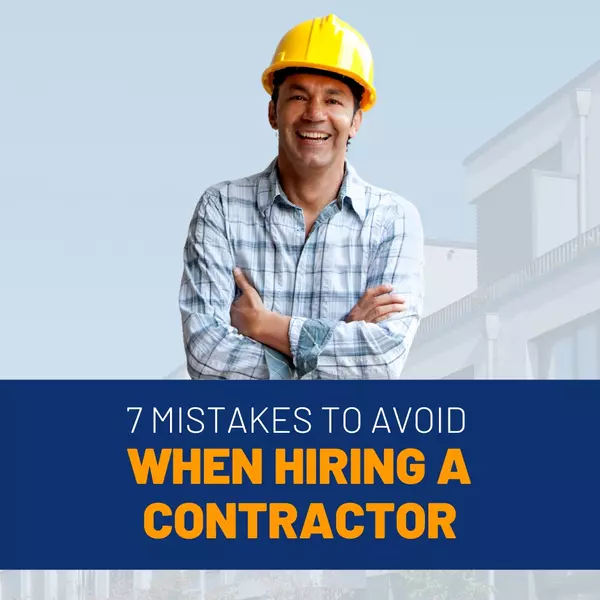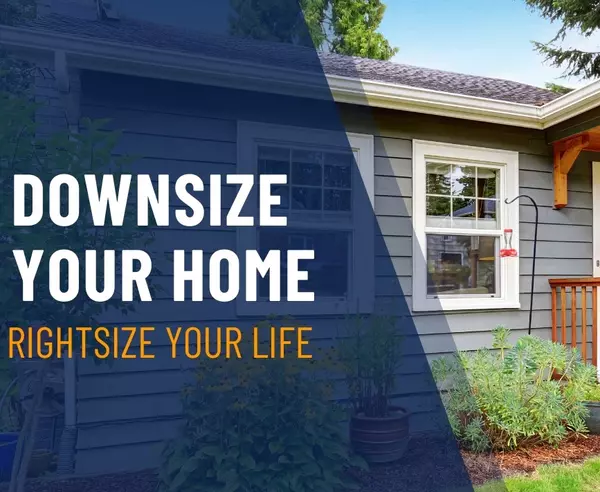Multigenerational Home Buying: How to Find a Home That Fits Your Whole Family

For many homebuyers, multigenerational living used to be considered an option of last resort: it was a route families took only when they needed to ride out a financial storm or care for ailing family members. But that mindset is on the decline: A growing number of families now say that they are embracing multigenerational living and moving in together by choice. In fact, research by the National Association of Realtors (NAR) found that the share of multigenerational home buyers rose to 14% in 2022––close to an all-time high.1 Buyers cite a multitude of reasons for choosing a multigenerational home, including saving money on living expenses, pooling resources, taking care of very young or aging relatives, and spending more time with family. "Multi-generational home buying is a way for families to care for one another, support one another, and often buy a home that may have been previously out of reach," writes Deputy Chief Economist Jessica Lautz in a blog post about the trend.1 Living with extended family has become especially popular in recent years as younger generations face higher home costs and seniors embrace aging in place. According to Pew Research, the number of Americans living in a home with at least two generations of adults has more than quadrupled since the 1970s.2 For many families, the benefits are substantial. Research shows that people who live in multigenerational homes are healthier and tend to live longer. They also enjoy more financial security. Plus, research by Pew found that people who live with relatives are more likely than not to say that it has been a positive experience.2,3 That's not to say that multigenerational living is easy: It can also be stressful––especially if you choose a home that isn't suited for a larger family. The key to making it work is to pick a home that can accommodate young and old alike without requiring you to sacrifice comfort or privacy.2,4 Here's a closer look at multigenerational living, along with tips for finding a home that's suitable for a diverse group. WHAT TO CONSIDER BEFORE SHOPPING FOR A MULTIGENERATIONAL HOME Before starting your house hunt, take the time to discuss your house plans as a family so that you're all on the same page. Have you hashed out what you're looking for in a new home? Can you agree on potential compromises? Are there any unaddressed concerns about the move? You may also find it helpful to articulate your "why" for buying a multigenerational home and how each of you might benefit. For some families, multigenerational living is all about caring for relatives and sharing responsibilities. But for others, the goal is to pool resources so that you can purchase a more desirable property or cut down on expenses, like childcare or senior living. For homeowner Jian Huang, she initially bought a multigenerational home to help her aging mother. But she says the purchase also helped her family save a lot of money on expenses––as much as $25,000 to $40,000 a year. “It makes so much sense financially and emotionally that we would not have it any other way,” commented Huang to Apartment Therapy.5 In addition to talking over your short-term wants and needs, you'll also want to weigh long-term issues that could crop up in the future, like accessibility or money concerns. For example, if some family members are nearing retirement, accessibility issues (such as extra-steep stairs or a narrow hallway) could become a problem over time. Similarly, a more luxurious home with extra amenities like a pool may appeal to buyers who have gathered a lot of cash upfront, but it may also require a bigger long-term budget for maintenance and supplies. If you haven't had these discussions yet, set a date in your calendar so that you can talk it over as a group. We can help by interviewing family members individually and advising you on what you can realistically find in today's housing market. WHAT TO LOOK FOR IN A MULTIGENERATIONAL HOME Once you've settled on what you want and need from a new home, your next step should be to jointly draft a budget so that you'll know what you can afford. To ensure that no one in your family gets accidentally overextended, think holistically when planning your new housing budget and determine what you would need to buy the home––and maintain it. In addition to budget, you'll also want to consider a home's size and what kind of layout you might need. In general, homes that offer ample space for solitude and privacy are thought to be more practical for multigenerational living––especially if there will also be young children.4 However, the ideal layout for your family and the amount of square footage you'll need to be happy long-term will also depend, in part, on family members' personalities. Some people don't mind sharing a bathroom or having bedrooms situated close to one another. But others may find that they need something more separate to relax. Different housing options to consider include: A large home with plenty of rooms and at least one or more ensuite bathrooms. A home with an accessory dwelling unit (ADU), such as a basement apartment. A multifamily unit, such as a duplex. For home buyers looking to age in place, a home that offers a separate ground-floor unit, such as a backyard ADU, could be the most comfortable (and the most practical) option, says author Sheri Koones. “It’s a way for many older people to avoid having to go into an expensive assisted living or other facility as they age,” said Koones in an interview with Realtor Magazine.6 Another possibility to consider would be a home you could add onto or retrofit into multiple units. However, building a brand-new accessory unit or renovating an existing space can be pricey. When visiting a property, we'll help you weigh potential costs and estimate whether it's a good investment. We can also connect you with a trusted contractor who specializes in renovations. HOW TO BUY A MULTIGENERATIONAL HOME Buying a home with family can be complicated––especially if you plan to jointly apply for a mortgage. However, depending on your financial resources, you may be surprised to find that it's sometimes easier to qualify for certain mortgages as a group than if you tried to go it alone.7 Talk it over with a mortgage lender or broker and ask for advice on what's best for your situation. We'd be happy to connect you with a professional who understands the nuances of co-buying. Technically, there's no limit to the number of co-borrowers you can have, but some lenders may be more lenient with their lending requirements than others. For example, most conventional lenders will only work with a maximum of four borrowers for a single loan. If you want to buy a home with a larger number of co-borrowers, you may have to look to an alternative lender.7 Your credit will also be an important factor in determining your mortgage qualifications and what you can buy, so have everyone check it as soon as possible. Pulling your credit reports and scores will not only tell you where you stand. It will also alert you to correctable issues with your credit, such as mistakes on your credit reports or too much debt on your cards.8 As you discuss your homebuying budget and strategy, jointly consider the following: Who will be on the mortgage? What about the title? Would including everyone on the mortgage be beneficial for your mortgage rate? For those who don't qualify for the mortgage or have a lower credit score, can you make other arrangements so that they can still financially contribute? Next, consider potential tax and estate planning implications of your home purchase and what might happen if some family members later decide to drop out of the arrangement.9 To ensure you make an informed decision, it's best to speak with a licensed professional. Ask us for a referral to a legal professional or an accountant who can advise you. BOTTOM LINE Multigenerational home buying has grown more popular for a reason: it's a great way to combine resources and buy a supportive home for more than just your immediate family. It can also be a smart lifestyle choice, helping reduce loneliness and promote health and well-being.10 If you're wondering whether multigenerational living is right for you, call us for a consultation. We'd be happy to walk you through potential options and help you envision your own full house. The above references an opinion and is for informational purposes only. It is not intended to be financial, legal, or tax advice. Consult the appropriate professionals for advice regarding your individual needs. Sources: National Association of Realtors - https://www.nar.realtor/blogs/economists-outlook/all-in-the-family-multi-generational-home-buying Pew Research Center - https://www.pewresearch.org/social-trends/2022/03/24/financial-issues-top-the-list-of-reasons-u-s-adults-live-in-multigenerational-homes/ SSM - Population Health -https://www.ncbi.nlm.nih.gov/pmc/articles/PMC5769098/ Better Homes and Gardens - https://www.bhg.com/what-to-look-for-in-a-multigenerational-home-8409277 Apartment Therapy - https://www.apartmenttherapy.com/multigenerational-homes-37412085 Realtor Magazine - https://www.nar.realtor/magazine/real-estate-news/home-and-design/all-under-one-roof-trends-in-multigenerational-living Bankrate - https://www.bankrate.com/mortgages/how-many-names-can-be-on-a-mortgage/ Experian -https://www.experian.com/blogs/ask-experian/what-credit-score-do-i-need-to-buy-a-house/ Kiplinger - https://www.kiplinger.com/retirement/estate-planning-for-multigenerational-living-arrangements Institute for Family Studies - https://ifstudies.org/blog/multigenerational-living-is-it-a-solution-for-our-aging-population
Read MoreStage to Sell: 7 Proven Steps to Attract Buyers and Boost Offers

Want your home to fly off the market? 🚀 Home staging is your secret weapon! Check out our latest article for a checklist of staging steps to help win over potential buyers. 81% of buyers’ agents report staging helps buyers envision themselves living in a home.[1] Selling your home quickly and at the right price takes more than just listing it online. To attract buyers and secure top offers, your property needs to stand out. That’s where home staging — the process of strategically preparing a home for sale — comes in. Research shows that it can both increase a home's sale price and shorten the time it spends on the market. As a seller, you can choose to stage your home yourself or to work with a professional stager. Whichever option you choose, the goal is to show off your home’s best qualities and make a lasting impression. Getting ready to list your home? Here are seven essential strategies to turn it into a buyer’s dream. Declutter and DepersonalizeCreate a clean, neutral space by removing personal items, family photos, and excess furniture. Consider renting a storage unit if needed to keep things tidy while your home is on the market. Deep Clean and RepairA sparkling clean home leaves a lasting impression. Deep clean every room, paying special attention to areas like baseboards, windows, and appliances. Fix minor imperfections like chipped paint, loose tiles, and worn hardware. Pick Up a PaintbrushRepaint walls in neutral tones like beiges and off-whites to appeal to the widest range of buyers. Consider repainting outdated cabinets in white or soft gray for a modern and updated look.[2] Enhance Curb AppealMake a strong first impression with a well-maintained exterior. Power wash siding and walkways, touch up any chipped paint, and tidy up your landscaping by removing dead plants and adding seasonal color.[3] Stage Key RoomsFocus on the living room, primary bedroom, and kitchen, as these spaces are most important to buyers.[1] Arrange furniture to create an open and inviting flow, and use rugs to define spaces and add warmth. Find Your Best LightMaximize natural light by removing heavy window treatments — use sheer curtains or light-filtering shades for a softer touch. Incorporate a mix of ambient, task, and accent lighting with warm bulbs to create a warm and inviting atmosphere throughout your home.[4] PhotographyHigh-quality photos are essential in today's digital world. Hire a professional photographer to capture your staged home at its best, showcasing its features and potential. Consider using videos or virtual tours to provide an immersive experience for potential buyers. Get Started TodayReady to stage your home for a successful sale? Contact us today for a free, no-obligation consultation! We'll assess your home's unique needs, provide expert advice on maximizing its appeal, and connect you with trusted professionals who can help you achieve your selling goals. Let's work together to make your home stand out and attract the best offers! Sources: National Association of Realtors - https://www.nar.realtor/sites/default/files/documents/2023-profile-of-home-staging-03-30-2023.pdf Zillow - https://www.zillow.com/learn/how-to-stage-house-to-sell/ National Association of Realtors - https://cdn.nar.realtor//sites/default/files/documents/2023-03-remodeling-impact-outdoor-features-03-17-2023.pdf Martha Stewart - https://www.marthastewart.com/2126982/how-to-layer-your-lighting
Read More7 Mistakes to Avoid When Hiring a Contractor

Embarking on home improvements can be both exciting and daunting. One of the most critical decisions you'll make is choosing the right contractor to bring your vision to life. However, many homeowners fall into common pitfalls during this process, leading to stress, financial strain, and subpar results. In this guide, we'll explore seven mistakes to avoid when hiring a contractor to ensure your project runs smoothly from start to finish. SKIPPING THE RESEARCH PHASE If you rush into hiring a contractor without the proper research, you risk overpaying or hiring someone whose skills and vision do not align with your needs. What To Do Instead: Conduct research to gain an understanding of best practices surrounding your project. Interview at least three contractors and ask about the processes and materials they will use. Get referrals from trusted sources. We’d be happy to share a list of recommendations! 2. CHOOSING BASED SOLELY ON PRICE While it's natural to want to save money, extremely low bids may indicate cut corners, subpar materials, or hidden costs that will surface later. What To Do Instead: Consider experience, reputation, and quality of work. Understand what's included and what's not in each bid. Remember that investing in a reputable contractor can save you money in the long run. 3. NEGLECTING TO CONFIRM CREDENTIALS & INSURANCE Neglecting to check a contractor’s references or licensing could put you at risk, and without proper insurance, you may be left footing the bill if something goes wrong.[1] What To Do Instead: Request references from past jobs and call to discuss their experiences. Confirm that the contractor is licensed according to local requirements. Verify insurance, including general liability and workers' compensation coverage. PROCEEDING WITHOUT A WRITTEN AGREEMENT A handshake deal might seem friendly and straightforward, but it’s difficult to enforce and leaves room for misunderstandings about project scope, timelines, and costs.[2] What To Do instead: Have a signed contract in place before any work begins. Outline scope, materials, timeline, payment schedule, and warranty information. Don't sign anything until you fully understand and agree to all terms. 5. PAYING TOO MUCH UPFRONT Paying a large sum upfront or the full cost of the project before the work is completed can leave you vulnerable if the contractor fails to deliver.[3] What To Do Instead: Avoid contractors who demand large upfront payments or cash-only deals. Tie payments to project milestones and stick to them. Never pay in full until the project is completed to your satisfaction. 6. FAILING TO GET NECESSARY PERMITS Skipping the permit process might seem like a way to save time and money, but it can lead to serious consequences, including fines, forced removal of work, or even legal action.[4] What To Do Instead: Talk about permits with your contractor before work begins. Ensure that obtaining necessary permits is part of your contract. Make sure all required inspections are completed during the project. IGNORING RED FLAGS AFTER THE PROJECT HAS STARTED If problems arise during your project and the contractor is unwilling to address them, ignoring the issue can make the situation worse. What To Do Instead: Keep detailed records of problems and any communication with the contractor. Arrange a meeting to discuss your concerns and ask for a resolution plan in writing. Consider seeking advice from a legal professional if the contractor is uncooperative. BOTTOMLINE Hiring the right contractor is crucial to the success of your home improvement project. By avoiding these common mistakes, you can significantly increase your chances of a smooth and successful renovation experience. If you’d like help finding a contractor or want to know how planned improvements could impact your home’s resale potential, reach out for a free consultation! The above references an opinion and is for informational purposes only. It is not intended to be financial, legal, or tax advice. Consult the appropriate professionals for advice regarding your individual needs. Sources: MarketWatch LegalZoom The Washington Post Bob Vila
Read MoreTop 4 Factors to Consider When Choosing Your Mortgage

Securing a mortgage can feel daunting––even to the most experienced borrowers. But don't let that deter you: If other homebuyers' experiences are any indication, odds are you'll eventually find a loan that works well for you.[1] The key to finding the right mortgage is to look for one that you’ll feel comfortable with long after you've closed on your new property. In addition to comparing term lengths and interest rates, also consider how the loan will fit your daily life and preferences. For example, we recommend asking yourself questions such as: Are you a natural risk taker, or do you prefer firm plans and predictability? Can you afford a bigger mortgage payment if interest rates increase, or are your anticipated home expenses already stretching your monthly budget? To help you get started, we've rounded up four of the most important factors to consider when narrowing your list of potential mortgage options. 1. Your Credit Score To secure a conventional mortgage, you'll typically need a FICO score of at least 620, but some mortgage types require even higher credit scores.For example, to qualify for a U.S. Department of Agriculture (USDA) loan on a qualifying rural property, you'll need a minimum score of 640. Or, if you're seeking a jumbo mortgage (home loans above $766,500 to $1,149,825, depending on where you buy), you may need a score of at least 700 or more.[2] You still have options, though, if your credit score is lower. You may be able to get a Federal Housing Administration (FHA) loan with a score as low as 500 if you have at least a 10% down payment. Some regional banks and credit unions may also be more flexible with their requirements.[3] 2. Your Income and Expenses When evaluating your creditworthiness, a lender will compare your income to the total debt you'll carry once you've bought the home.[4 This is called your debt-to-income (DTI) ratio, and it’s considered a key indicator of whether you can afford a particular mortgage. Your approval odds will be higher if you have a DTI ratio below 36%. But, if you have great credit and ample cash, you may still be able to get a conventional loan with a DTI ratio in the 45% to 50% range.[5] If not, you may need to look to other “non-conforming” loan types, such as government-backed mortgages. Lenders may also take into account other expenses unique to a home, such as property taxes, insurance, and homeowner association fees. In general, they prefer that you spend less than 28% of your income on housing or a maximum of 36% (which is the cap that federally-sponsored lenders advise).[6] 3. Your Expected Down Payment You don't have to put down 20% to qualify for a conventional mortgage, but you will need a significant amount. According to the National Association of Realtors, the median down payment amount in 2023 was 14%.[7] If your cash reserves are slim, then you may want to consider an FHA loan, which only requires 3.5% down. Or, if you qualify for a USDA or VA loan, you may even be able to buy your home with no money down except for a small funding fee.[8] Keep in mind, though, that a smaller down payment could mean a larger monthly payment. Plus, you'll not only pay more interest overall and be responsible for a larger principal, you'll also need to take out mortgage insurance. Conventional loans require private mortgage insurance (PMI) if your down payment is below 20%, while FHA loans always require insurance.[9] 4. Your Lifestyle and Risk Tolerance For most Americans, a mortgage is a decades-long commitment. So it's important to find one you can happily live with—and comfortably repay—for the long haul. Most fixed rate mortgages, for example, are designed to last anywhere from 15 to 30 years or more.[10] When you spread out your repayment over such a long period, monthly payment amounts are smaller, but you also pay more in interest. Another way to lower your monthly payment in the short term is to choose an adjustable-rate mortgage (ARM) that offers a low fixed APR for a lengthy period (typically five, seven, or 10 years) before changing to a variable rate. This can be especially beneficial if you only plan to stay in the home for a short period. But buyer beware: ARMs can be risky if you don't plan ahead for a higher interest rate.[11] BOTTOMLINE Regardless of the loan you choose, it pays to shop around and carefully compare terms. Fortunately, we have a vetted list of mortgage professionals who can explain your options, answer your questions, and help you find the best loan to meet your needs. We can also develop a custom plan for securing a great home that fits your budget. Reach out when you're ready to get started. The above references an opinion and is for informational purposes only. It is not intended to be financial, legal, or tax advice. Consult the appropriate professionals for advice regarding your individual needs. Sources: Bankrate Bankrate Newsweek NerdWallet Bankrate Bloomberg National Association of Realtors Bankrate CFPB Investopedia
Read More
Recent Posts









